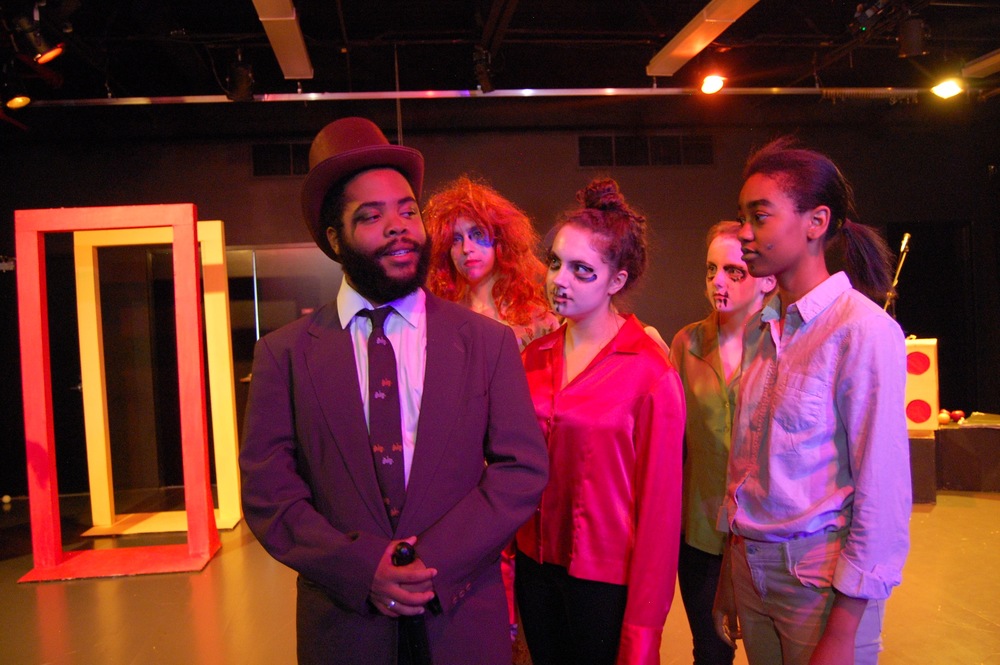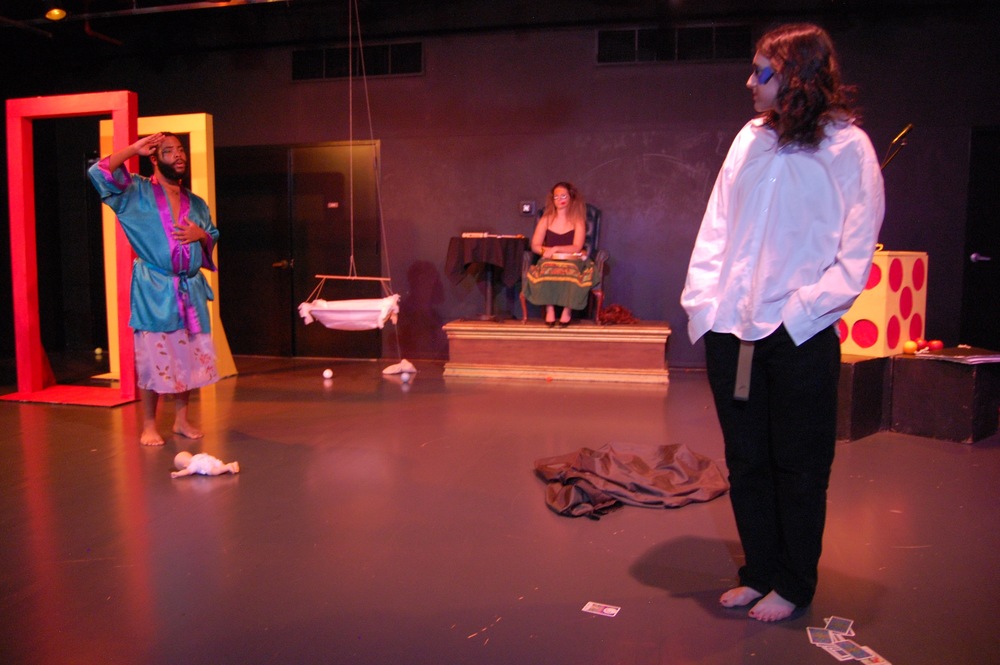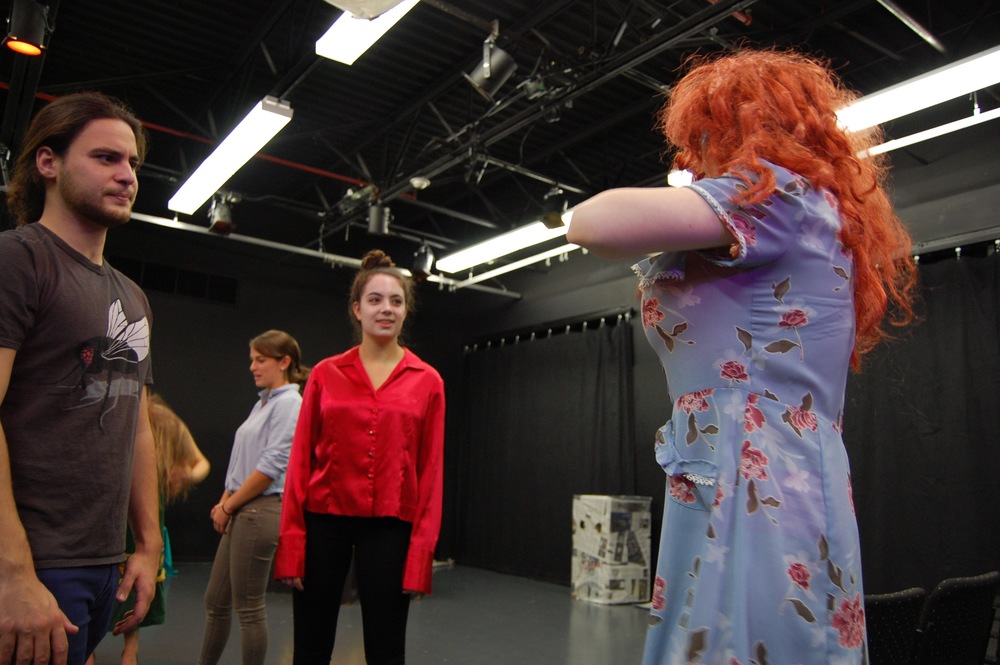
Brandon Bogle ’16, Olivia Bagg ’19, Kirsten Mulrenan ’18, Rowen Halpin ’19, Kara Powell ’18
Testing the Waters of Surrealism
By: NICK GRAVER ’16
As the title The Breasts of Tiresias would suggest, Skidmore Theater’s latest workshop production is no friend to conventional realism. In case they miss the title’s reference to breasts on Tiresias, the blind male prophet of Greek mythology, the audience is reminded twice of the play’s anti-logic: first in director Theodoros Saroglou ’16’s program note warning that “the people in this play don’t play by our rules,” and second in an opening monologue delivered by Brandon Bogle ’16, who temporarily takes the role of director or playwright in introducing the world to the audience. The character speaks: “We’re trying to bring a new spirit into the theater…Here you will find actions / which add to the central drama and augment it / Changes of tone from pathos to burlesque / and the reasonable use of the improbable.” Within moments, Breast of Tiresias delivers.
The play begins in relatively familiar territory, with a domestic struggle between Therese (Olivia Bagg ’19) and her husband (Bogle), a woman with no interest in childbearing, who instead would rather become a doctor, a senator, an artist, a soldier, and “Minister President of the State”. Seconds later, her ambition spirals into a transformation; her breasts and buttocks become toy balloons, which are then popped, and she grows a mustache. She becomes Tiresias. Similar destructions of gender norms run throughout the show, in which impossible boundaries and vast distances seem meaningless. In taking on this challenge, Bogle says he worked on casting aside traditional approaches to character motivation, “dropping out of that mindset and being in the moment.” Bagg, a first year, noted that she “had to embrace the unknown and become comfortable with the fact that there was no ‘right’ way to do anything.”

Saroglou describes the piece as “an exploration into what surrealism [can] be. More an introduction to surrealism and not so much a surrealist show itself.” Legend has it that after the play’s opening performance in 1919, the audience had a riotous argument over whether the play was set in Paris or in Zanzibar, two locations named ubiquitously throughout the text. Saroglou suggests this type of argument is missing the point, telling his audience to “take from [the play] what you will, there is no right or wrong.” Bagg adds that Saroglou’s views played directly into his direction of the show, which moved away from answering dramaturgical questions: “[Saroglou] mainly supported me by reassuring me to dive into the uncertainty and own the risks/choices I was making.”
If it is possible to remain faithful to a play that demands such an extreme level of absurdity, Saroglou’s imaginative team of designers succeeded. Giorgos Petkakis ’18 took on set, sound, and lights for the show—a major accomplishment, considering the colorful and somewhat humorous set, which featured elements such as a 3 foot cubic die and a newspaper-covered box from which a reporter (Rachel Karp ’18) emerged midway through the play. Hanging above the set were a number of beautifully simple cradles designed by Mercury Hogan ’16, which provided a stark contrast to the chaotic nature of their surroundings. Above all else, Alyssa Hagerbrant ‘16’s costumes and lavish makeup took center stage, and helped to flesh out the world of transformations and ambiguity that Saroglou had created, and in which members of the audience were happy to spend their evenings.

Director Theodorus Saroglou ’16 coaches his actors during a dress rehearsal.
All photos appearing in this article were taken by Ziggy Schulting ’18
